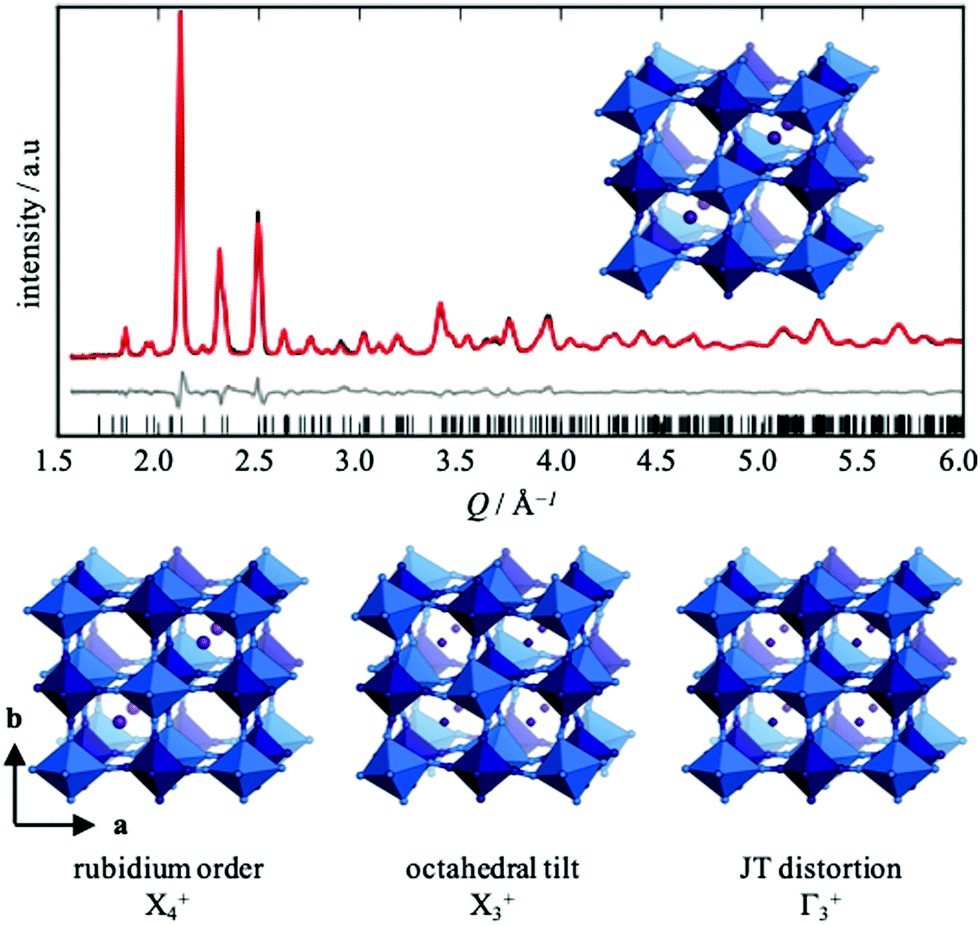Prussian blue analogues (PBAs) are a diverse family of microporous inorganic solids. Originally commercialized in the dye industry, they are known for their gas storage ability, ion conduction, and other magnetic, electronic and optical properties leading to applications in fields including energy storage and electrocatalysis.
The structure of most PBAs can be described using cubic space groups but, under certain conditions, distortions can occur that lower the symmetry. One such distortion is octahedral tilting, which can be induced by applying pressure or changing the composition, and can improve their transport properties for applications such as positive electrodes in sodium-ion batteries.
The structure of PBAs is analogous to that of double perovskites, where octahedral tilting is well known and studied. The simultaneous existence of multiple distortions is very common in other perovskite analogues and can be accompanied by interesting properties such as ferromagnetism and piezo-electricity. However, PBAs are normally undistorted with cubic symmetry.
The study, published in Chemical Communications, focusses on the previously unreported PBA RbCuCo(CN)6. Any structural distortions will be dictated by the position of the cyanide ions, which are only weakly visibly using X-ray diffraction, and so Dr Boström used an Xpress measurement on GEM to add the complementary technique of neutron diffraction to her study.
Although having never used the facility before, she explains; “Xpress beamtime was ideal for me, as I only needed a single diffraction pattern, which would not have been enough for a full proposal. It also meant that I got the data very quickly. The two beamline scientists Alex and Ron were very helpful, so everything went very smoothly."
Using the combination of the two diffraction techniques, she found that three structural distortions were present in the material: rod-like occupational rubidium order, octahedral tilts and Jahn–Teller distortions. The use of neutrons was crucial to determining the correct structure of the material, and her work highlights the need for neutron diffraction when studying distorted PBAs, as well as other double molecular perovskites such as thiocyanates and formates.
“I hope that there will be more neutron studies on Prussian blue analogues in the future." Says Dr Boström; “They are extremely interesting materials, right at the intersection between perovskites and metal organic frameworks, but can be quite tricky to characterise with in-house X-ray diffraction."

Powder neutron diffraction pattern for RbCuCo(CN)6 from detector bank 4 at the GEM diffractometer, ISIS. The Rietveld fit is shown in red, the difference curve (data−fit) in grey and allowed reflections are indicated by vertical bars. The three constituent distortions and their irreps are also shown. Reproduced from DOI: 10.1039/C9CC05436G
Further Information:
The full manuscript can be found online at DOI: 10.1039/C9CC05436G
